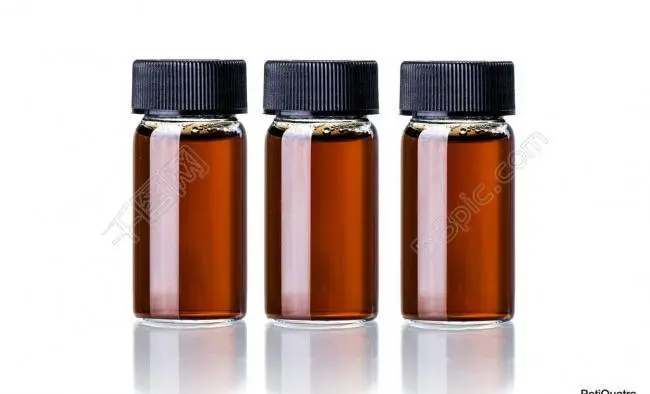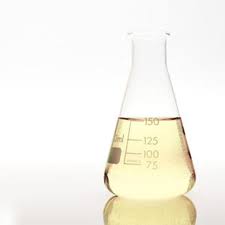**Surfactant Herding: Your Steel’s Secret Superpower?**
(What Types Of Steel Can Benefit From Surfactant Herding)
Ever wonder how some steel parts gleam with perfect cleanliness? Or why others resist corrosion so well? Often, the unsung hero isn’t just the steel itself, but a clever process called **surfactant herding**. This isn’t magic, it’s smart chemistry giving steel a major boost. Let’s dive into which steels get the biggest advantage from this microscopic makeover.
**1. What Exactly is Surfactant Herding?**
Think of it as microscopic shepherds for oil and grease. Surfactant herding uses special chemical agents – surfactants – to tackle contaminants on steel surfaces. These surfactants have a split personality. One end loves water (hydrophilic). The other end loves oil and grease (hydrophobic). When applied, these molecules surround oily contaminants. The hydrophobic tails bury themselves in the grease. The hydrophilic heads point outward.
Here’s the “herding” part. Under specific conditions, like controlled heating or solvent changes, these surfactant-wrapped contaminants are driven together. They form larger, easier-to-remove droplets or masses. It’s like rounding up scattered sheep into a manageable flock. The result? Steel surfaces become incredibly clean, far cleaner than basic washing alone. This deep cleanliness is the foundation for better performance in many applications. It’s crucial for preparing steel for coatings, plating, or just ensuring peak performance.
**2. Why Should Steel Care About Surfactant Herding?**
Cleanliness isn’t just about looks. For steel, it’s absolutely critical for performance and longevity. Surfactant herding delivers deep cleaning power that traditional methods often miss. Here’s why it matters so much:
* **Superior Coating Adhesion:** Paint, powder coating, galvanizing, plating – they all need a perfectly clean surface to stick properly. Even microscopic oil residues cause coatings to peel, blister, or fail prematurely. Surfactant herding removes these hidden contaminants, creating the ideal “anchor” for coatings. This means longer-lasting protection and better looks.
* **Enhanced Corrosion Resistance:** Oil and grease might seem protective, but they often trap moisture and salts underneath. This creates perfect spots for rust to start. By thoroughly removing these contaminants, surfactant herding removes these hidden initiation points. Clean steel resists corrosion far better, especially when paired with protective coatings applied afterward.
* **Improved Welding Quality:** Contaminants on steel surfaces create serious problems during welding. They cause porosity (bubbles), weak welds, and splatter. Surfactant herding ensures the weld zone is pristine, leading to stronger, cleaner, and more reliable welds.
* **Better Performance in Critical Applications:** In demanding uses like aerospace components, medical devices, or precision bearings, any contamination is unacceptable. Surfactant herding provides the ultra-clean surface needed for safety, reliability, and precision function.
* **Increased Process Reliability:** Consistent surface cleanliness means fewer rejects, less rework, and smoother manufacturing processes overall. Surfactant herding offers that consistency.
**3. How Does Surfactant Herding Work Its Magic on Steel?**
The process is clever, involving precise steps to maximize the herding effect. It’s not just a simple dunk tank. Here’s a typical sequence:
1. **Initial Cleaning:** The steel part undergoes a basic wash to remove loose dirt, dust, and heavy oils. This could be an alkaline cleaner or solvent wash.
2. **Surfactant Application:** The key step. A solution containing the specific surfactant blend is applied. This can be done by immersion, spraying, or fogging. The surfactants immediately start working, surrounding and encapsulating the finer, more stubborn oil and grease residues.
3. **The Herding Trigger:** This is where the “herding” happens. A specific action triggers the surfactants to aggregate the encapsulated contaminants. Common triggers include:
* **Heating:** Gently warming the part causes the surfactant micelles (the clusters surrounding the oil) to merge, forming larger droplets.
* **Solvent Exchange:** Changing the solvent environment (like adding water to an organic solvent system) forces the surfactants to rearrange, pushing the oil droplets together.
* **Drying:** Controlled drying can drive the coalescence.
4. **Contaminant Removal:** The now-agglomerated contaminants are much easier to remove. A final rinse, often with clean water or a solvent rinse, efficiently washes away the large droplets or masses. Sometimes mechanical action (like spraying) aids removal.
5. **Drying:** The thoroughly cleaned steel part is dried completely, ready for the next manufacturing step like coating or assembly.
The specific surfactants and process parameters are carefully chosen based on the steel type, the contaminants present, and the final application requirements.
**4. Which Steel Types Reap the Biggest Rewards?**
While surfactant herding can benefit many steels, certain types see truly transformative results. The key factor is often the steel’s surface condition and its intended use:
* **Cold Rolled Steel (CRS):** This steel has a smooth surface but often carries significant rolling oils from its manufacturing process. These oils are tenacious and hard to remove completely. Surfactant herding is exceptionally effective at cleaning CRS, making it ideal for appliances, automotive panels, and furniture requiring pristine painting or plating.
* **Galvanized Steel (GI, Galvalume):** Zinc coatings provide great corrosion resistance, but oils from production or handling can interfere with painting or adhesive bonding. Surfactant herding removes these oils without damaging the delicate zinc layer, ensuring top-notch paint adhesion for building panels, ductwork, and automotive parts.
* **Stainless Steel:** Used in demanding environments (food processing, medical, chemical). Even small organic residues can lead to corrosion or contamination. Surfactant herding achieves the ultra-high cleanliness required for passivation (enhancing the natural oxide layer) and for critical hygiene standards. Essential for surgical instruments, tanks, and food prep surfaces.
* **Precision Tool Steels & Alloy Steels:** Used for cutting tools, molds, bearings. Surface integrity is paramount. Residual oils affect heat treatment uniformity and final performance. Surfactant herding ensures a perfectly clean surface before critical processes like nitriding, carburizing, or coating application, maximizing tool life and performance.
* **Steel Going into Electroplating or Anodizing:** These processes are extremely sensitive to surface contamination. Oils cause poor plating adhesion, blistering, and uneven deposits. Surfactant herding is often a vital pre-treatment step before electrocleaning and plating lines for chrome, nickel, zinc, etc., ensuring high-quality, durable finishes.
**5. Surfactant Herding FAQs: Your Questions Answered**
Let’s clear up some common questions about this powerful process:
* **Q: Does surfactant herding damage the steel?**
**A:** Generally, no. When done correctly, it’s a non-abrasive chemical process. The surfactants target the contaminants, not the steel itself. Proper control of concentration, temperature, and time is key to avoid any potential etching, especially on softer metals like zinc coatings.
* **Q: Is it better than vapor degreasing or strong solvents?**
**A:** It often offers advantages. It can remove contaminants vapor degreasing might miss, especially polar soils. It’s frequently more environmentally friendly than harsh chlorinated solvents. It can be integrated into aqueous cleaning lines. It provides a different, often deeper level of cleanliness.
* **Q: Can it remove rust or scale?**
**A:** No. Surfactant herding specifically targets organic contaminants like oils, greases, and waxes. It does not remove inorganic materials like rust, mill scale, or weld slag. Those require mechanical (blasting, grinding) or chemical (pickling) methods.
* **Q: How clean does it really get the surface?**
**A:** Extremely clean. It can achieve surface cleanliness levels suitable for demanding applications like aerospace bonding or medical implants, often measured in micrograms of contaminant per square centimeter. It drastically outperforms simple detergent washing.
* **Q: Is it expensive to implement?**
(What Types Of Steel Can Benefit From Surfactant Herding)
**A:** Costs vary. While the surfactant chemicals themselves add expense, the benefits often outweigh it. Reduced rejects, improved coating adhesion (meaning less coating needed for protection), longer part life, and potentially replacing more hazardous solvents can lead to significant overall cost savings and process improvements.
Inquiry us
if you want to want to know more, please feel free to contact us.




